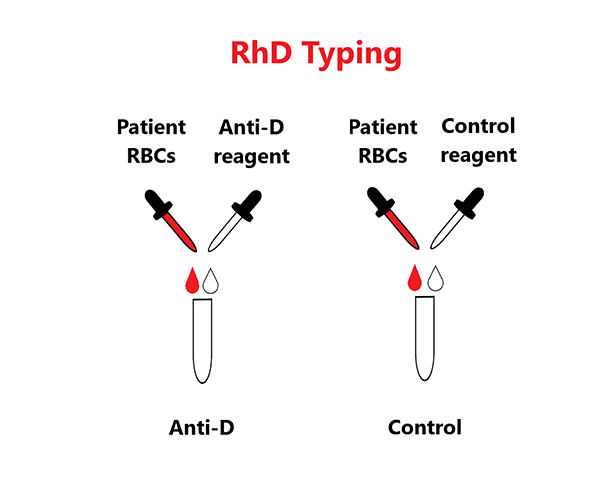RhD Typing:
Given the importance of the RhD antigen, typing for RhD is performed routinely during ABO typing. Patients who express the RhD antigen are often simply referred to as Rh-positive, or just “positive” while those without it are called Rh-negative or just “negative”. It is important to note that when a patient is termed “A-positive”, “O-negative” and so forth, the terms positive and negative refer only to the RhD antigen, and do not reflect the expression of other Rh antigens such as C or E, nor the results of the antibody screen.
As with ABO typing sera, RhD typing sera are directly agglutinating. When adding RhD typing sera to patient erythrocytes, it is important to confirm that any positive result does not reflect non-specific agglutination simply resulting from an increase in protein concentration. All positive reactions with RhD typing must therefore be accompanied by a negative albumin control (see Figure below). If the addition of albumin also causes patient RBCs to agglutinate, the patient’s RhD typing result is invalid and must be considered indeterminate. A common cause for a positive RhD control is the presence of a strongly reactive autoantibody.

Next page: Weak D Testing
